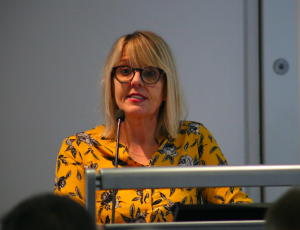New Technology outrage as more redundancies are announced
Telecoms & Financial Services, BT August 5 2020
Wednesday 5th August 2020
An already serious redundancy situation in BT Technology took a further turn for the worse this afternoon (Wednesday) with management’s announcement that around 30 more team member grade employees have been added to phase one of the jobs cull.
Following on from the division’s announcement on July 22 of 157 redundancies from an in-scope group of 235 Dynamic Infrastructure and Cyber Security employees – most of which currently look certain to be compulsory – management have today revealed that a further 29 employees in Service Platforms ‘Voice’ are to be given their marching orders.
Management want some out the door as early as October – following on swiftly from the 157 previously announced job losses – with most of the rest of the 29 going by Christmas and just a small number remaining until either March or June next year.
The majority of the latest batch of casualties come from the legacy FeatureNet work area which is due to be switched off in December – though the company admits it will need the skills of some of those earmarked for redundancy until the end of the first financial quarter of 2021 to complete the migration to replacement platforms and to conduct associated system changes.
The latest bombshell from Technology (more details of which can be viewed in BT Members’ Bulletin No. 160/2020 means that, in total, 186 job losses have already been confirmed in what is just the initial salvo of a phased redundancy programme that has been triggered by a combination of automation and consolidation under Technology’s far reaching transformation plans.
The division’s brutal approach to the job losses makes it just the second BT Group division to break with the time-honoured principle of voluntarism in redundancy situations.
With the CWU already at loggerheads with management over a radical departure from BT’s traditional approach to staff surpluses that inexplicably appears calculated to cause maximum employee pain, the situation looks set to deteriorate further because the union’s Technology National Team believes that more cuts should be expected in other parts of as automation and centralisation continue.
On top of that, the longer-term impact on employees of the division’s ‘Better Workplace’ plans to consolidate most of its operations from more than 400 sites into just six ‘UK Hubs’ is not yet fully understood – but that potentially signals yet more pain ahead for Technology’s beleaguered workforce.

Sally Bridge
“The two issues of Better Workplace and business transformation are coming together in the worst possible way in Technology,” stresses CWU assistant secretary Sally Bridge. “Worse still, this is happening at precisely a time when the first ever compulsory redundancies of BT team member employees are currently underway in BT Enterprise – signalling a brutal reversal of the enlightened approach to handling staff surplus situations based on voluntarism that BT has successfully operated for decades with the full co-operation of the CWU.
“On top of that, we’re witnessing a fundamental shift in the way management is negotiating, or rather not negotiating, with the union – with Technology hell bent on redundancy selection criteria that don’t even allow for volunteer to put themselves forward for voluntary leaver packages.
“Inevitably this approach will mean that individuals will be exited from the company who wish to stay, while other people will be compelled to stay when they would actually have preferred, for their own reasons, to take a voluntary leaver package- thereby mitigating the need for compulsory redundancies.”
Formal Disagreement registered
With management currently refusing to consider every single CWU counter to mitigate the need for compulsory redundancies, last week a Formal Disagreement was registered with the company.
This a serious step under the union’s time-honoured partnership agreement with BT Group that should, in theory, prevent a further deterioration in industrial relations by triggering a period of reflection in which both sides take a step back to reconsider the areas in dispute.
“The lack of voluntarism in this redundancy situation is the crux of the matter and at the very heart of our disagreement with Technology,” insists Sally.
“It’s the firm view of the CWU that compulsory redundancies could be avoided if only the business agreed to extend the areas/ pools if individuals in scope and allowed for a meaningful VR exercise that allows individuals in a pool to opt for VR prior to any selection exercise.
The Formal Disagreement also cites the union’s belief that Technology is not adhering to a legally binding agreement contained within an annexe to the 2018 Pensions Agreement covering redundancy situations. That annexe commits the company to work jointly with the CWU to resolve staff surpluses through a combination of redeployment, insourcing of previously off-shored or contracted out work, , retraining and reskilling and the offering of enhanced voluntary leaver packages before any actual redundancy proposals can be formalised.
Other considerations cited in the Formal Disagreement include:
- The union’s belief that the current timescales for the Phase1 redundancies are unreasonable as they do not allow for meaningful consultation nor sufficient opportunity for those ‘at risk’ to find suitable alternative roles within the company
- Concerns that the terms of the Equality Act of 2010 may not be being adhered to on account of the business’s failure to provide information on how the business intends to deal with in-scope employees with protected characteristics
Sally concludes: “For all these reasons the CWU does not believe that Technology has fulfilled the aim of the relevant legislation – which is to ably demonstrate that, through consultation, they’ve met the requirements of avoiding, reducing or mitigating the consequences of the proposed dismissals.

Ken Woolley
“As such the CWU has made it clear to BT that, under the long-established Formal Disagreement Procedure, the status quo ante should apply.”
Technology national team chair Ken Woolley explains: “That means that everything should stop to allow for a proper consideration of the serious issues the union has raised – but, unfortunately, as things stand, Technology is not stopping.
“That’s why it’s absolutely essential that members across the Division and wider-BT fully engage with the CWU’s Count Me In campaign – because it’s only by standing firm collectively for a future in which all those with a stake in the company are treated with dignity and respect that we’ll be able to challenge the devastating trajectory that management has embarked upon.”


